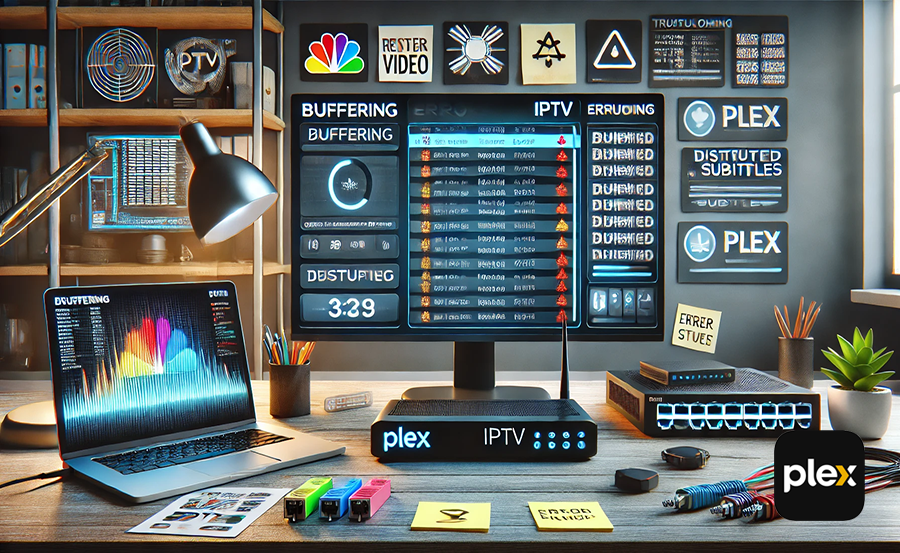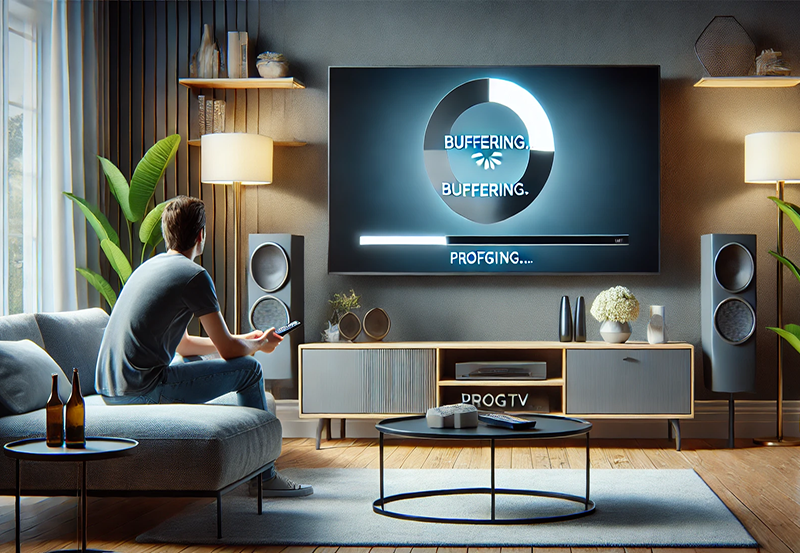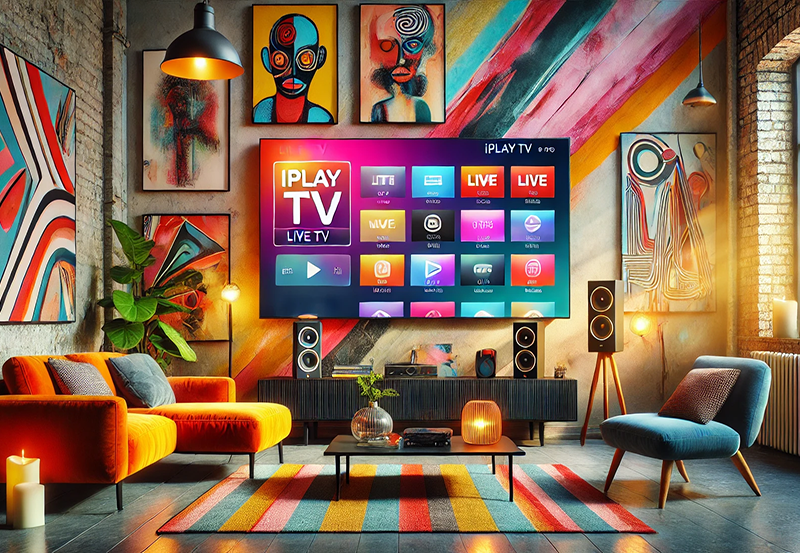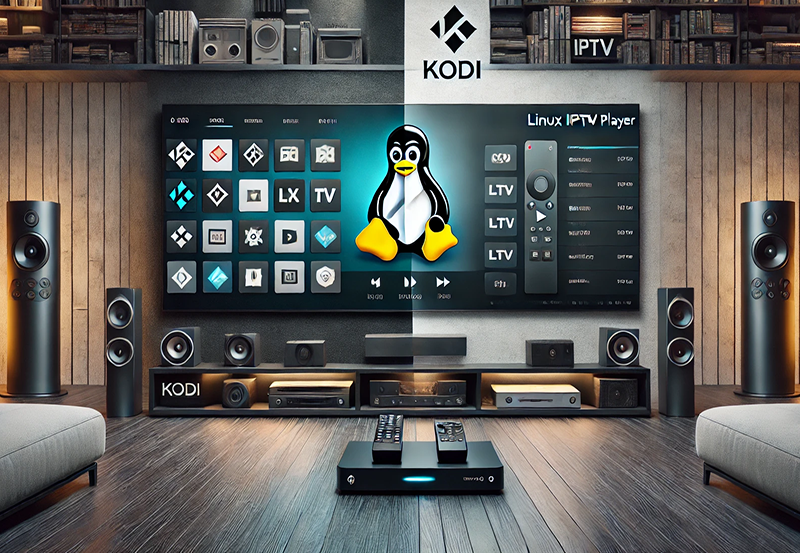Streaming has revolutionized our entertainment landscape, offering unparalleled access to diverse content. However, even the most seasoned streamers face challenges with Plex IPTV. This article dives into the top five mistakes that disrupt your viewing experience and offers sound advice for smoother streaming. Let’s ensure you maximize your enjoyment with affordable IPTV options and discover superior IPTV viewing without unnecessary hitches.
The Importance of a Reliable Internet Connection
One of the most common pitfalls in Plex IPTV streaming is an unreliable internet connection. A stable internet connection is the backbone of any streaming service, and poor connectivity can lead to buffering issues that frustrate even the most patient viewer.
Consider your current internet plan. Is it equipped to handle high-definition streams? If buffering is constant, upgrading your plan might be necessary. Also, examining your home network setup is essential. Position your router centrally and utilize wired connections when possible for enhanced stability.
Smart Advice:
Catch every touchdown, goal, or slam dunk with IPTV for sports lovers, built for non-stop sports excitement.
Router Position and Optimization
The placement of your router is crucial in minimizing internet interference. Obstructions like walls and furniture can drastically reduce the signal strength. Ensure your router is in an open space, ideally elevated, to extend its range.
Additionally, upgrading your router can provide faster speeds. Newer models support advanced technology designed to enhance streaming. Regularly updating your router’s firmware can also improve its performance significantly.
ISP Limitations and Solutions
Internet Service Providers (ISPs) may have data caps or throttling practices that affect streaming quality. Understanding your ISP’s policies can prevent unexpected slowdowns. If needed, consider switching to an ISP that offers unlimited data plans.
Selecting a plan with higher bandwidth might be beneficial. This ensures that your network can handle multiple devices streaming simultaneously without impacting quality.
Configuring Plex for Optimal Performance
Plex is a robust platform, but configuring it properly is key to avoiding streaming issues. Many users overlook the importance of optimizing settings, leading to frequent interruptions.
Within Plex settings, focus on adjusting the stream quality to match your internet’s capabilities. If your connection struggles with 4K content, lowering the resolution ensures a smoother experience without constant buffering.
Transcoder Settings
Optimizing Plex’s transcoder settings can significantly enhance performance. Utilizing the ‘Make my CPU hurt’ option allows Plex to use more system resources for better streaming, especially if you have powerful hardware.
Additionally, enabling ‘use hardware acceleration’ can reduce the load on your CPU, resulting in a more seamless playback experience.
Troubleshoot Streaming Devices
Ensure the devices you use for streaming are up-to-date. Older devices may not support the latest codecs or software updates, causing compatibility issues with Plex.
Regularly check for updates and consider replacing outdated devices with newer models that offer enhanced streaming capabilities.
Common User Configurations Errors
Sometimes, the simplest configuration errors can lead to major streaming problems. These mistakes are often overlooked, yet they can severely impact the viewing experience.
Easily avoidable errors include incorrect login credentials and improper permissions set within your Plex server, both of which can cause disruptions in streaming.
User Account Management
Ensure all user accounts are configured correctly. Incorrect permissions might restrict access to specific content or capabilities. Double-check these settings if multiple users are accessing your Plex server.
Furthermore, using secure passwords and enabling two-factor authentication can prevent unauthorized access, ensuring smoother streaming for all users.
Server Maintenance and Management
Regularly maintaining your Plex server can prevent latent issues. Performing updates and cleaning unnecessary files keep it running efficiently.
Avoid overloading your server with excessive content. Prioritize quality over quantity to reduce processing strain and improve performance.
Navigating Content and Licensing Challenges
Licensing restrictions often confuse Plex users, exacerbating streaming issues. Understanding the content you’re streaming and its regional restrictions is essential for smooth operation.
Content might be inaccessible due to licensing agreements in your area. Researching available channels and understanding regional limitations can mitigate access errors.
Choosing the Best IPTV Channels
Selecting channels wisely improves streaming quality. Ensure channels are compatible with Plex and that their content is available in your region.
Choosing channels that offer adaptable streaming quality based on your internet connection ensures you’ll experience fewer interruptions.
Utilizing Affordable IPTV Services
Affordable IPTV services can offer excellent value, but it’s crucial to choose reputable providers. Research providers thoroughly to avoid scams and select a service that complements Plex seamlessly.
Read reviews and seek recommendations to discover superior IPTV viewing experiences. Ensuring compatibility between your service and Plex will greatly enhance your streaming pleasure.
Hardware Limitations and Their Impact
Hardware plays a significant role in streaming quality. Devices with outdated hardware may struggle under the demands of modern streaming, causing lags and interruptions.
Identifying and upgrading bottleneck components, such as RAM or network adapters, can greatly enhance your device’s capability to stream content smoothly.
Smart TVs and Streaming Devices
Many users prefer the convenience of smart TVs, but these devices might not always be optimized for Plex. Ensure your smart TV model supports the latest Plex app features for optimal performance.
Consider adding dedicated streaming devices to your setup. Devices like Roku or Amazon Fire Stick often provide superior performance and regular software updates compared to integrated TV solutions.
PC and Server Specifications
If you’re running Plex on a PC or dedicated server, ensuring it meets the recommended specifications is crucial. Upgrading components, such as CPU and GPU, can relieve processing bottlenecks.
Additionally, managing server load by limiting background processes and dedicating resources to Plex can significantly optimize performance.
Embrace Seamless Streaming Through Troubleshooting and Optimization
Streaming with Plex has the potential to transform your viewing habits, provided you avoid common pitfalls. By recognizing and addressing the mistakes covered, you can ensure a superior IPTV viewing experience—right in the comfort of your own home.
Remember that each streaming setup is unique, and a personalized approach to troubleshooting and optimization will yield the best results. Stay informed and regularly evaluate your setup to adapt to new streaming developments and demands.
FAQs About Improving Your Plex IPTV Experience

What internet speed is recommended for optimal Plex streaming?
For a smooth Plex streaming experience, a minimum internet speed of 25 Mbps is recommended, especially if streaming high-definition content. Make sure your ISP plan supports this speed.
Can I improve Plex performance without upgrading my hardware?
Yes, optimizing Plex settings, ensuring efficient network configurations, and using wired connections can significantly boost performance without hardware upgrades.
Do all IPTV services work with Plex?
No, not all IPTV services are compatible with Plex. Research and choose services that explicitly state Plex compatibility to avoid frustration and ensure seamless integration.
How can I make Plex more secure?
Improve Plex security by using strong passwords, enabling two-factor authentication, and regularly updating your server’s software to protect against vulnerabilities.
Is it necessary to use hardware transcoding for Plex?
While not necessary, using hardware transcoding can enhance Plex performance by offloading the processing from the CPU to the GPU, providing smoother playback and lower system strain.
With these insights, you’re empowered to tackle streaming challenges head-on, ensuring that Plex remains a cornerstone of your entertainment setup.
How to Add and Manage Playlists in TiviMate IPTV App





